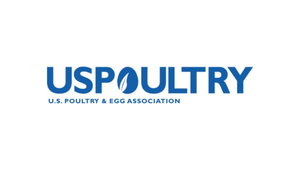Insight provided into past, present and future animal health research areas.
July 23, 2014

Although titled "Animal Health: A Retrospective Look," the Tuesday afternoon session at the 2014 Joint Annual Meeting of the American Dairy Science Assn. and the American Society of Animal Science offered insight into past, present, and future work surrounding animal health:
Researchers from the Expertise Centre for Farm Management and Knowledge Transfer and Livestock Research Wageningen UR reported on antibiotic use on dairies in the Netherlands. Their study of 94 farms found that antibiotic use has decreases 20% between 2005 and 2012. The majority of this reduction occurred due to reduced mastitis and “other” disease treatment, while dry cow therapy has not changed (currently around 44% of antibiotics used). The study also found that increased use of antibiotics was associated with greater farmer education, younger farmer age, increased herd milk yield, decreased herd SCC, and increased herd heath status overall.
Researchers in the U.K. and France have worked together to analyze the effect of body energy content of cows prior to calving on the occurrence of production and metabolic diseases after calving. Results showed that body energy content dropped sharply around calving for cows that were later diagnosed with retained placenta, metritis, or metabolic diseases as compared to cows that were healthy after calving. Additionally, cows that ended up with metabolic diseases had increased body energy content leading up to calving whereas other cows experienced decreasing body energy content before calving. This data could potentially be used in predictive models to find cows at risk for these diseases.
In 1998, a meta-analysis on rBST conducted by the Canadian Veterinarian Medical Association reported negative effects on udder health, lameness, body condition, reproduction, and longevity. In response to continued questions, a collaboration between multiple universities recently completed an updated meta-analysis. The study, including data from 26 peer-reviewed papers and 13,784 cows, found that rBST significantly increases both milk yield and components while having no effect on SCC, mastitis, body condition score, days open, services per pregnancy, pregnancy loss, twinning, cystic occurrence, clinical lameness, lameness lesions, traumatic lesions, or culling. Differences from the previous report could be attributed to the additional studies conducted since 1998 and strict criteria requiring that all analyzed studies tested rBST under label directions only. These results are currently in press and the hope is that they will eventually be distributed to both producers and the general public.
Milk quality is often evaluated using bulk tank somatic cell count, with a national limit set at 750,000 cells/mL and many co-ops requiring levels lower than 400,000 cells/mL. A recent retrospective analysis, representing 48% of milk in the U.S., determined that bulk tank somatic cell count has decreased 35% between 2001 and 2013. In 2013, 40% of shipments were less than 200,000 cells/mL while 95% was below 400,000 cells/mL. Antibiotic use in milk has also decreased over this same time period, with less than 0.02% of milk samples testing positive for antibiotics in 2013. Further information from this study can be found on the NAHMS website.
Finally, the University of Kentucky recently completed a study comparing eight compost bedded pack barns and seven sand bedded freestall barns. Their findings suggest there are no differences in locomotion score, hygiene score, SCC, mastitis infection prevalence, reported clinical mastitis, or bulk tank somatic cell count between barn types. The only evaluated difference between barn types was an increased incidence of mastitis caused by E. coli in compost bedded pack barns while an increased incidence of mastitis caused by environment strep was seen in sand bedded freestalls.
Continued retrospective studies, along with work looking into the future, are important to the dairy industry. These studies contribute to our knowledge and can help enhance our cow’s health through better management.
Karmella Dolecheck is originally from Twin Falls, Idaho. She graduated from Utah State University with her BS in Animal, Dairy, and Veterinary Sciences in 2012 and is currently finishing her MS degree in Dairy Systems Management at the University of Kentucky.
You May Also Like



